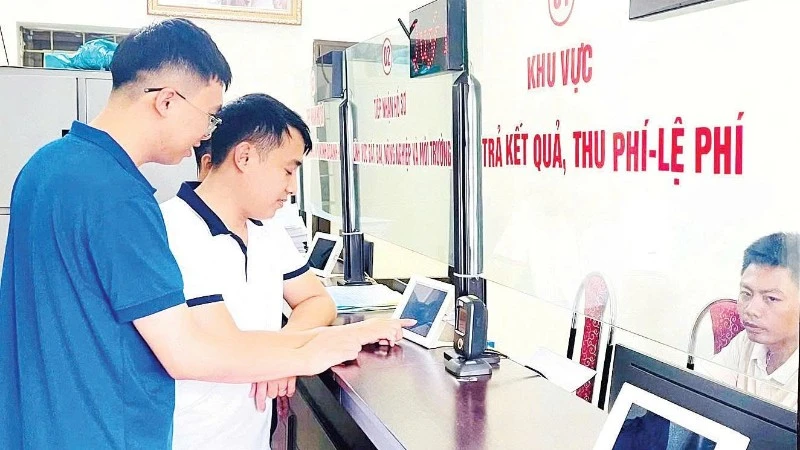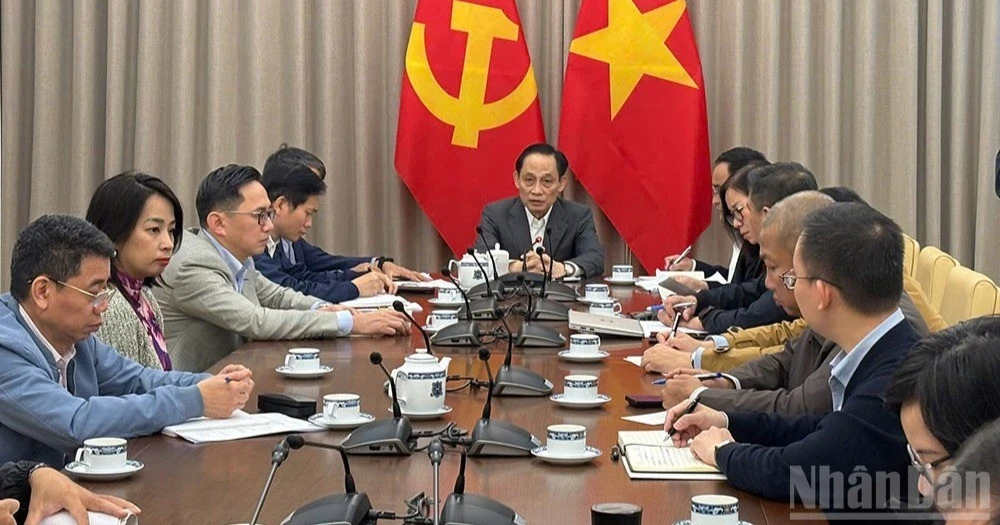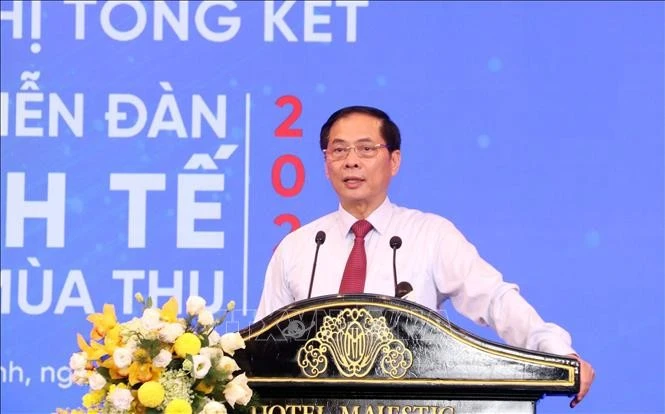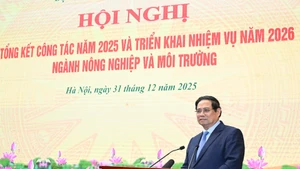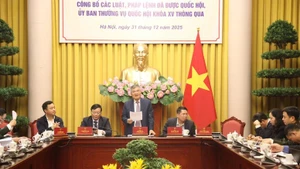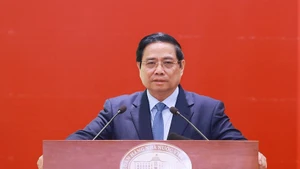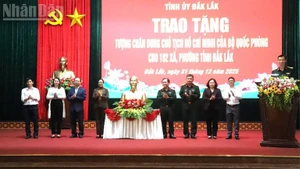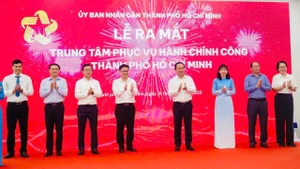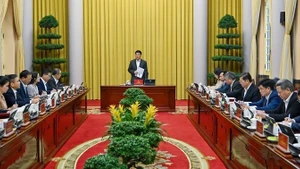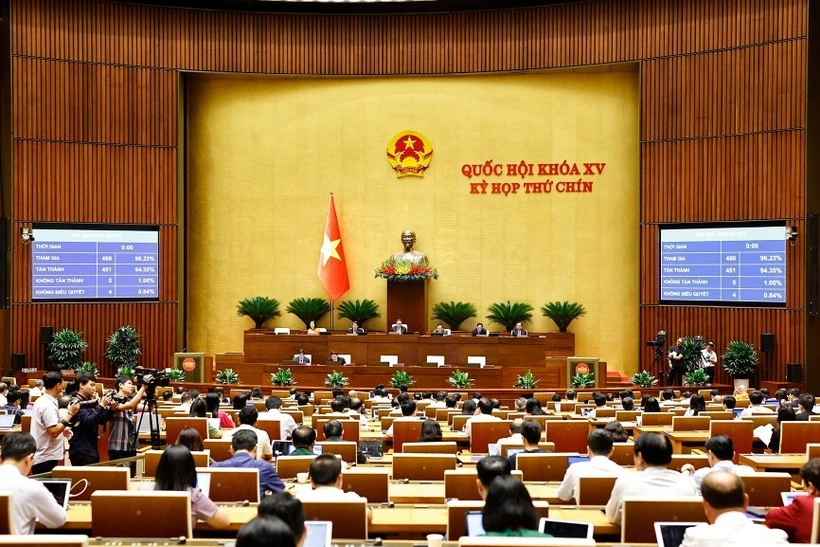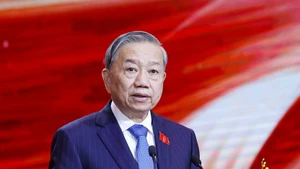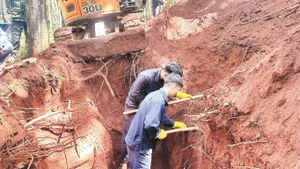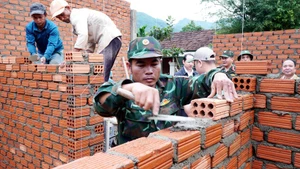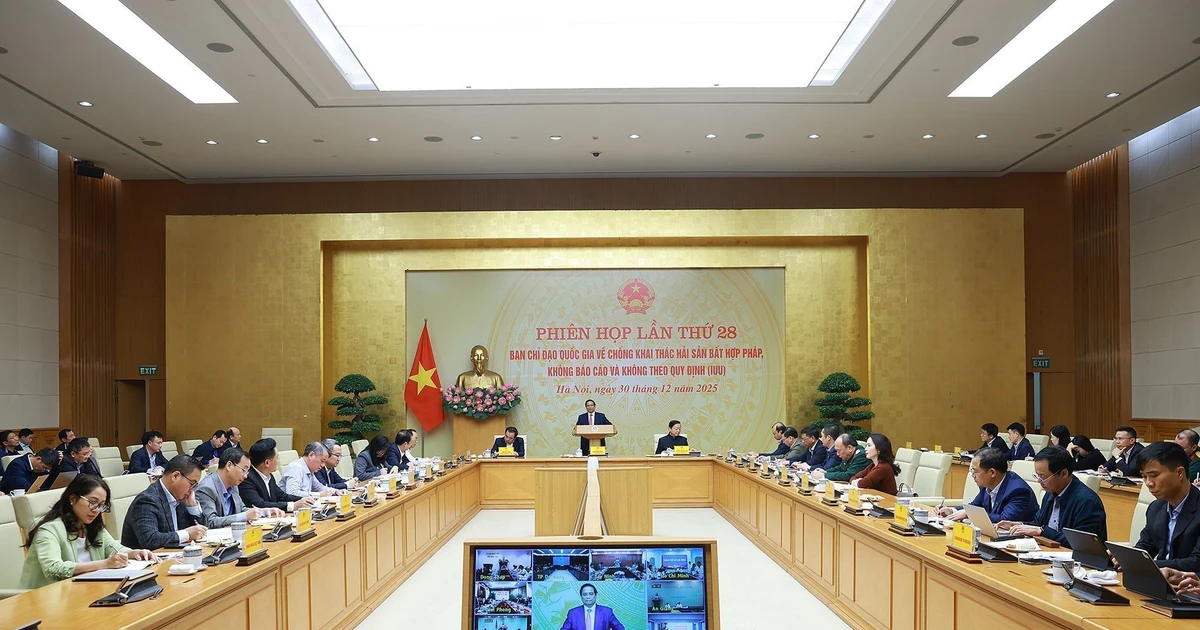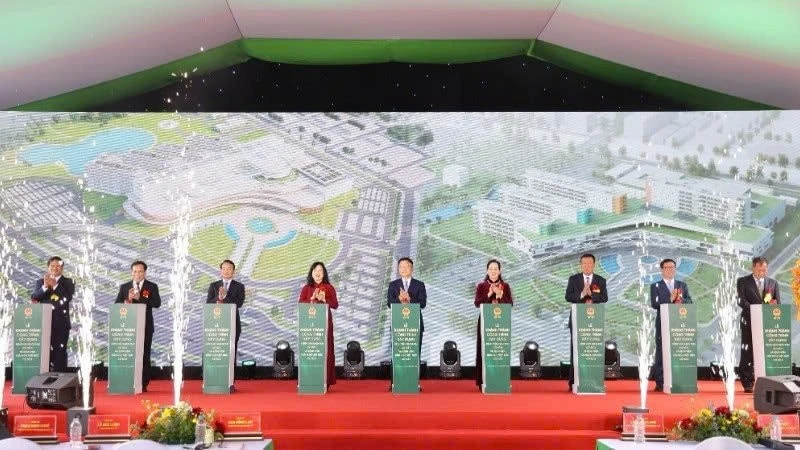Prioritising public service efficiency
Civil servants across the provinces are demonstrating a strong sense of responsibility, working hard to overcome initial difficulties and fulfil their assigned duties. In Lao Cai Province, shortly after launching the two-tier local government model, commune leaders, including Party Secretaries and Chairpersons of the People's Committees, met with residents to discuss and seek consensus on land clearance for key infrastructure projects. These included the 500kV Lao Cai–Vinh Yen transmission line, the Lao Cai–Ha Noi–Hai Phong high-speed railway, and other socio-economic development initiatives.
Hoang Thi Duyen, Party Secretary of Cam Nhan Commune in Lao Cai Province, shared that the new model of local governance has earned trust from officials and satisfaction from residents. Living nearly 100 kilometres from her office, she admitted she had not returned home to see her husband and children in the past 15 days due to work commitments.
Following the reorganisation, Lang Son Province positioned central communes at former district-level headquarters, which is considered a flexible and cost-effective measure that has proven efficient for administrative coordination. Key commune positions were assigned to former district-level officials, while Provincial Standing Committee members and Party members were appointed as Party Secretaries of newly formed communes and wards in central locations, strengthening leadership and direction.
Hoang Cong Lang, head of Lien Hop Village in Huu Lien Commune, remarked: “Previously, we had to travel to the district headquarters to speak with leaders. Now, we can go directly to the commune office and have our concerns addressed.” Additionally, key youth union officials have taken on roles as Standing Deputy Secretaries overseeing administrative affairs, contributing to leadership renewal and supporting the ongoing digital transformation.
Many localities continue to face a lack of personnel and inadequate facilities. In northern Thai Nguyen Province, 37 communes have had to split their Party Committees, People's Councils, People's Committees, and mass organisations across former commune offices located far apart. Communes lack official residences for staff, forcing some to sleep on temporary beds in their offices. Staffing is also a challenge, with shortages in financial, accounting, and IT personnel.
To address these issues, Thai Nguyen Provincial Chairman Pham Hoang Son has directed communes to promptly review staffing needs and submit proposals for seconding or transferring officials from provincial departments. Local authorities have been proactive in drafting detailed action plans, organising training sessions using a hands-on “mentorship” approach, and ensuring adequate facilities and human resources for effective operation of commune-level public administration service centres.
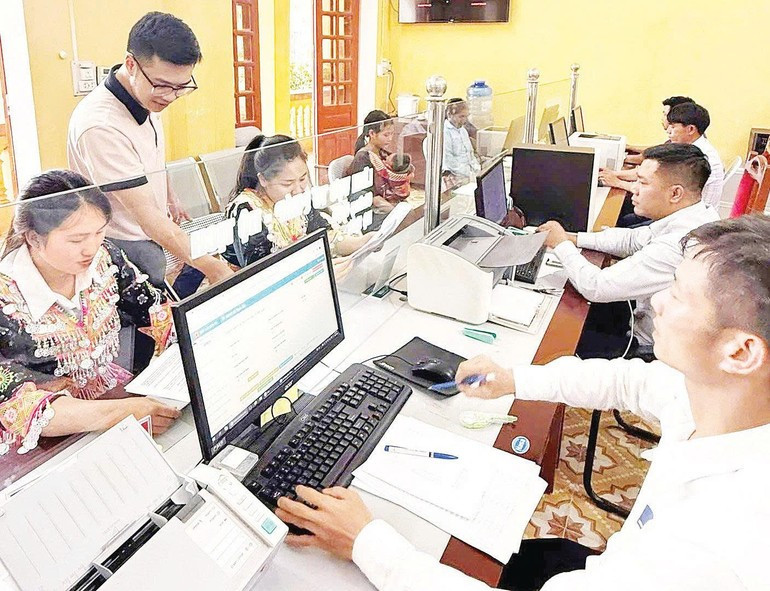
Many flexible approaches
Hai Phong City recently established two newly designated special administrative zones, including Cat Hai Special Zone which was formed on the basis of the former Cat Hai Island District. This zone includes 10 communes and 2 townships, covering an area of nearly 287 square kilometres with a population of over 71,000 people. However, its administrative headquarters and public service centre are located on Cat Ba Island. To address this, local authorities decided to open a second Public Administration Service Centre on Cat Hai Island itself, which officially began operations on July 21, providing timely services to the 15,000 residents living on the island.
Following administrative restructuring, the vast geographical area of Bac Ninh Province led many of its communes and wards to operate two administrative reception points simultaneously. With a strong commitment to ensuring seamless operations at its public service centres, Chairman of Bac Ninh Provincial People’s Committee Vuong Quoc Tuan instructed localities to conduct a comprehensive review and assessment of all public administration service centres, ensuring they are fully equipped with modern and synchronised infrastructure.
Capitalising on the strengths of the two-tier local government model, residents are now able to submit administrative procedures “beyond geographical boundaries”. In the near future, the province will select 18 strategically located public service centres for targeted investment in both staffing and infrastructure, aiming to provide residents and businesses with the best possible service.
During the initial days of implementation, technical challenges hindered integration with the National Public Service Portal. In response, Huu Lung Commune in Lang Son Province adopted a flexible approach, processing documents manually for residents while administrative staff worked overtime to update data into the system afterward. Vu Hoang Quy, member of the Provincial Party Committee and Party Secretary of Huu Lung Commune, shared: “Operations have now largely stabilised. The commune has also effectively utilised provincial funding to upgrade its Public Administration Service Centre into a clean and modern facility, ensuring uninterrupted service to residents.”
Trieu Mui Nay, a resident of Mau Son Commune, said due to her age and mobility challenges, she often hesitated to visit the commune office for administrative procedures. Now, with local officials visiting her home to assist, she feels both happy and grateful.
Continuing to address challenges
According to Director of Lang Son Provincial Department of Science and Technology Nguyen Quang Huy, in addition to coordinating with relevant departments to organise specialised in-person training sessions, the province is planning to develop a shared artificial intelligence (AI) model for all communes and wards. “This AI model will assist commune-level officials in handling tasks and retrieving data quickly and efficiently. It will also enable the province to monitor and evaluate the performance of each official, aligning with the goal of building a modern digital governance system in accordance with Central Resolution No. 57”, he explained.
Duong Duc Huy, Head of Lao Cai Provincial Party Committee’s Commission for Communications, Education and Mass Mobilisation, noted that the province has provided 5 billion VND to each former Lao Cai’s commune and 1 billion VND to each former Yen Bai’s commune to equip offices with working facilities. The province is also urgently researching support policies related to official housing, living allowances, and travel expenses to ensure that staff assigned to new locations can focus on their duties with peace of mind.
Lao Cai has also maintained “Digital Literacy for All” groups aimed at promoting “digital citizens”. Under this model, tech-savvy individuals guide those unfamiliar with digital tools, using local languages (such as Mong, Dao, Giay, Tay...) to communicate new policies to every household. Additionally, the province is proactively reporting its challenges to the central government and relevant ministries in search of practical solutions.
During implementation, some interoperability issues have arisen in Bac Ninh Province. For example, in civil registration, integrated services for birth certificates, permanent residency registration, and health insurance cards for children under six have encountered technical disruptions. The provincial platform, dichvucongbacninh.vn, has not been able to transmit data to the Ministry of Justice’s https://hotichdientu.moj.gov.vn system.
In some cases, registration data cannot be entered into the system, preventing the submission of online applications. Moreover, the inability to search historical data on the Ministry’s software means staff must resort to manually retrieving records from paper archives—a time-consuming task, especially in large administrative areas responsible for issuing civil status extracts.
Land-related administrative procedures are also not yet fully integrated with the national system. In addition, guidance documents from some ministries and agencies remain inconsistent regarding decentralisation and authority, leading to confusion among local officials. These obstacles must be promptly resolved by central ministries and departments to ensure the two-tier local government model operates efficiently and stays connected with the people, ultimately creating the best possible conditions for both residents and businesses.
